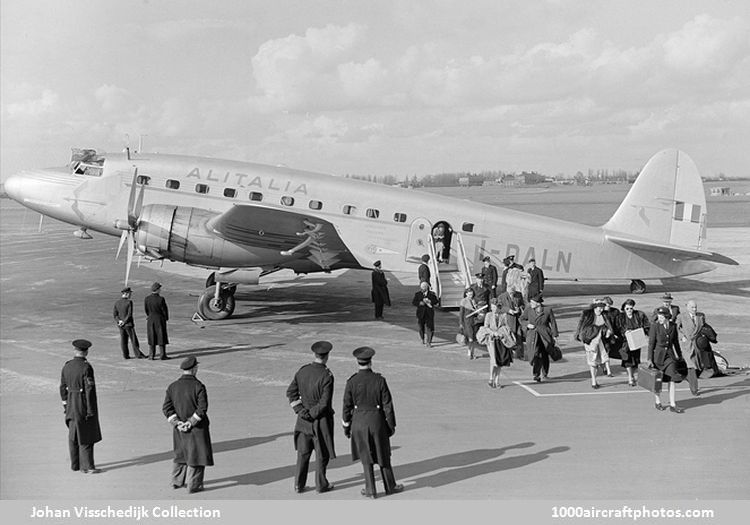FIRST ROME-LONDON SERVICE
Even taking into consideration the fresh wind at Northolt airport on Saturday, April 3, the approach and landing of the Savoia Marchetti SM.95 from Rome on the first Alitalia service was unbelievably slow, and was reminiscent of the days when low-wing loadings were the fashion. Over the boundary the 30-seater Italian four-engined transport was many feet too high by modern standards, but to everyone's surprise it sank gently and, when a few hundred yards down the runway, landed gracefully, albeit on one wheel, and rolled on down the runway nearly an hour late on schedule.The Italian Ambassador, His Excellency the Duke Gallarti Scotti, and the chairman and executives of B.E.A. were at the airport to welcome the managing director of Alitalia, Signor L. Acampora, Mr. D.L. Craig, the B.E.A. resident director of the company, and the 14 fare paying passengers. This aircraft, the Sebastiano Caboto, is one of five, all named after famous navigators, which have been flying between Rome and Paris, but this was the first to land at a London airport.
Alitalia pilots have flown non-scheduled services in Lancastrians from this country. The SM.95 was designed before the war, and is of wooden construction. Although the original intention was to fit Alfa Romeo engines, the transport is now powered by four Bristol Pegasus engines, which, incidentally, have a very neat installation. The company are also operating four Fiats with Pegasus engines, three with Alfa Romeo engines, and six Lancastrians.
The cubic capacity of this aircraft is small and the fuselage is fitted with a double row of seats on the starboard side and a single row on the port side, but the fuselage is narrow and the roof is low; in fact, the seating accommodation is rather cramped. Oxygen is supplied not through masks but through a flexible tube and nozzle. The SM.95 has a cruising speed of 170 mph, and the flight from Rome to London takes six hours.
Services will operate direct from Rome to London on Tuesdays and Saturdays, returning the following days, but once a week there will be an additional service from Rome through Milan and London to Manchester, the total flying time being nine hours. The normal crew carried is two pilots, two wireless operators, one engineer, and one steward.
The Italian company have, in the SM.95, an aircraft which, although designed before the war, would appear to have an ideally slow approach and landing speed and other safety features, but one serious deficiency is that no anti-icing equipment is at present installed.
